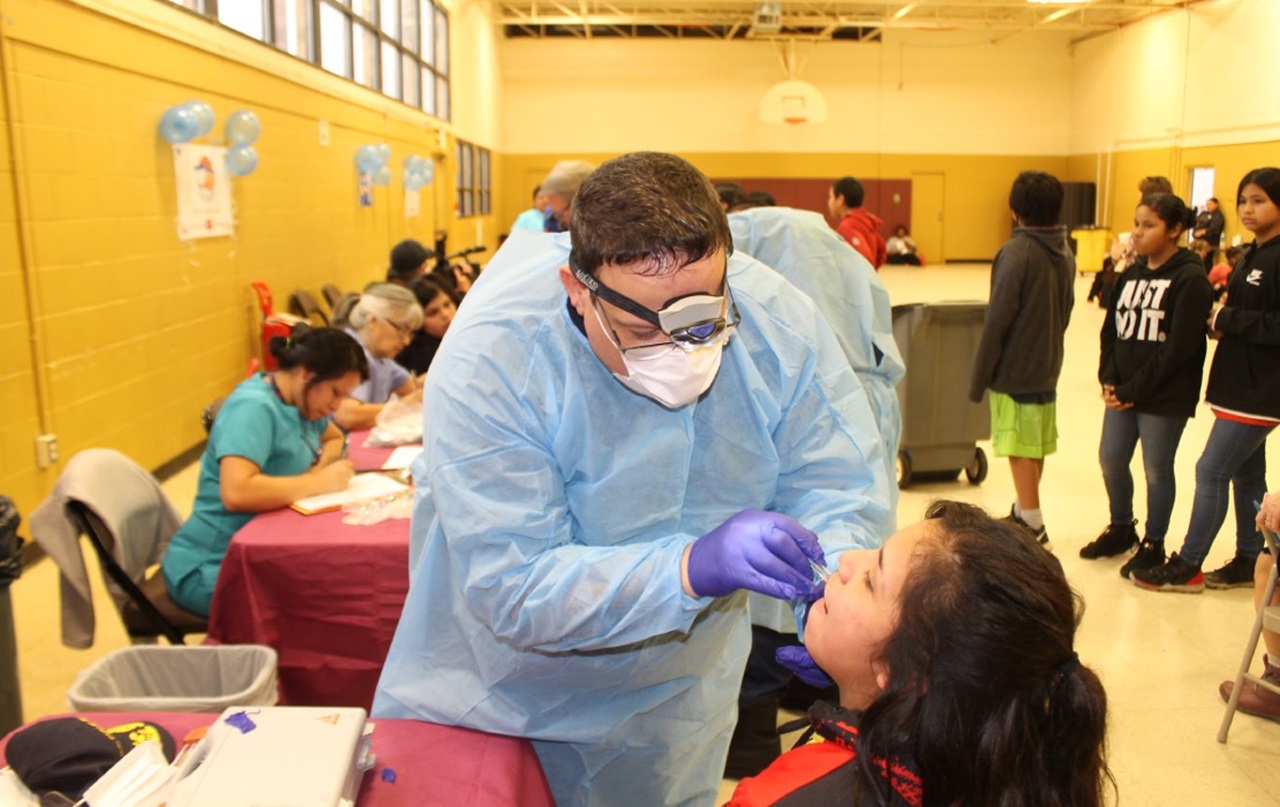
- Details
- By American Dental Association
Special to Native News Online. Some of your child’s most exciting growth milestones involve their teeth – from their first tooth coming in, to losing their first tooth and getting a special visit from the Tooth Fairy.
During all stages of growth, good oral hygiene is crucial since tooth decay and cavities can form at a very young age. “When it comes to cavity prevention in children, it all starts with diet and what your children are eating and drinking,” said Dr. Andi Igowsky, a pediatric dentist and WDA member from Sheboygan. Wisc.
Want more Native News? Get the free daily newsletter today.
“You want to be careful with not only sugary and sweet foods, but even so-called ‘healthy snacks’ like crackers, pretzels and fruits. These foods contain carbohydrates, which are all broken down into sugar in our bodies and can lead to tooth decay.”
Here are some more ideas to prevent cavities in your child’s teeth:
- Ensure your children are eating three meals each day. “Grazers” and “snackers” are at high risk of developing cavities. Snacking is not just about what is being consumed, but about the frequency of consumption. Every bite of sugary or acidic food can attack tooth enamel for up to 20 minutes after consumption. Ensuring your children are eating three meals each day can help limit the amount of daylong snacking on foods that contain carbohydrates and sugars.
- Sugar-free isn’t problem-free. Reduced sugar and sugar-free food and beverage options can be healthier, but a steady diet of sweet flavors is very addictive. Children will come to expect and crave constant sugar, so use moderation, even with food and drinks that contain sugar substitutes.
- Drink water, especially if it’s fluoridated. Although they’re delicious, it’s no surprise that sugary and acidic beverages like juice, chocolate milk, soda and sports drinks cause cavities. If your community’s water is fluoridated, drinking tap water can strengthen teeth, help protect against cavities and keep the mouth clean. For younger children, it’s important to only have water in their bottle if they are going to bed with it. Even milk, breast milk and formula contain a lot of sugar, and you don’t want your child to have access to that sugar all night long.
- Ward off tooth decay with sealants. Sticky foods like fruit snacks, raisins, dried fruits and chewy candies are major cavity-causers in the deep grooves of our molars. Sealants are thin, protective coatings that adhere to the chewing surface our molars, and when applied in a dental office, can reduce the risk of decay on molars by nearly 80%. The application process is quick and painless, and the sooner they can be applied to your child’s molars, the better. Ask your dentist if sealants are a good option for you and your family, or visit https://www.mouthhealthy.org/en/az-topics/s/sealants to learn more.
- Help your child clean their teeth at morning and night. Make sure your child is brushing their teeth twice a day and cleaning between their teeth with floss at least once per day. It is recommended that parents help their kids brush and floss their teeth until they are coordinated enough to tie their own shoes. Since many children brush too quickly and miss the back of the mouth and around the gums, using a two-minute timer can help teach children how long to brush. Using a toothpaste and mouth rinse with fluoride will help prevent cavities and strengthen teeth. Look for toothbrushes, toothpaste and other oral hygiene products that carry the American Dental Association Seal of Acceptance.
- Visit your dentist regularly. Ensure your child is established as a patient at a dental office,not only for regular visits but also for emergencies. As your child grows, regular dental check-ups and cleanings are essential to ensure cavities are identified and addressed early on. Dentists and dental hygienists will also educate your child to make sure they are brushing and flossing correctly as their molars grow in and they begin to understand self-care.
Help us defend tribal sovereignty.
At Native News Online, our mission is rooted in telling the stories that strengthen sovereignty and uplift Indigenous voices — not just at year’s end, but every single day.
Because of your generosity last year, we were able to keep our reporters on the ground in tribal communities, at national gatherings and in the halls of Congress — covering the issues that matter most to Indian Country: sovereignty, culture, education, health and economic opportunity.
That support sustained us through a tough year in 2025. Now, as we look to the year ahead, we need your help right now to ensure warrior journalism remains strong — reporting that defends tribal sovereignty, amplifies Native truth, and holds power accountable.
 The stakes couldn't be higher. Your support keeps Native voices heard, Native stories told and Native sovereignty defended.
The stakes couldn't be higher. Your support keeps Native voices heard, Native stories told and Native sovereignty defended.
Stand with Warrior Journalism today.
Levi Rickert (Potawatomi), Editor & Publisher
